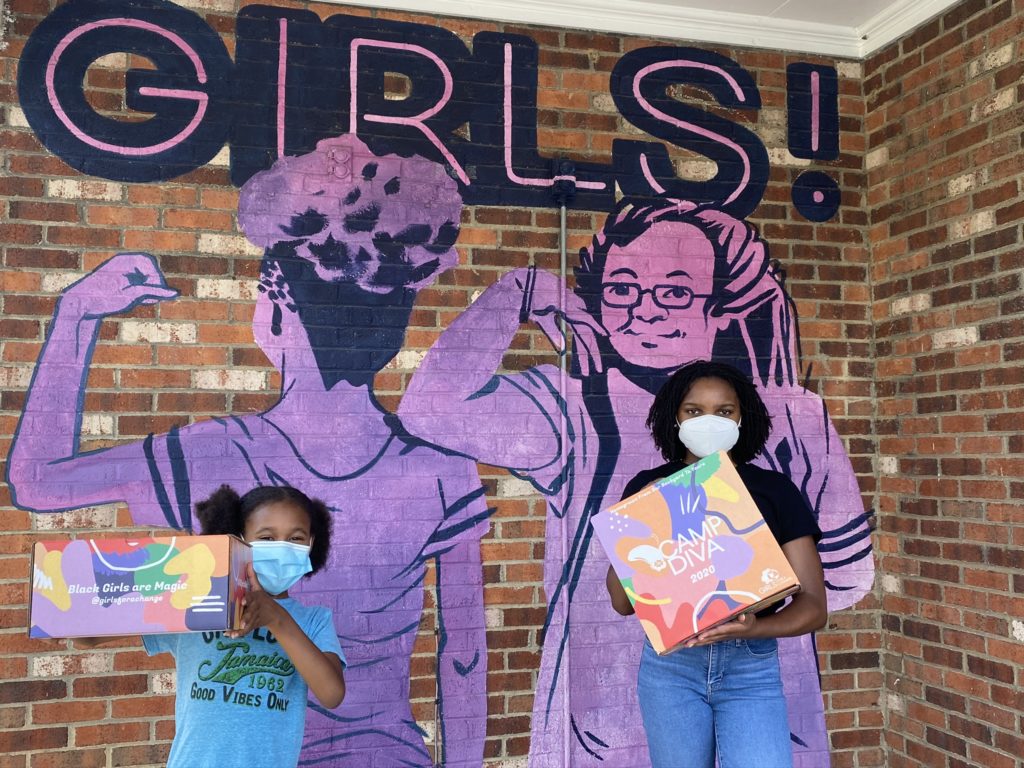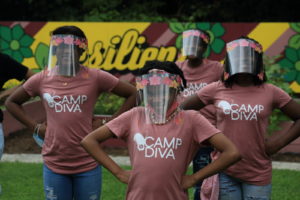More than four decades after the Civil Rights Act dismantled Jim Crow laws, Black people and other people of color continue to face scrutiny that their white peers often do not. Particularly for youth, bias and prejudice create barriers and hurdles that can stop a young person in their tracks, whether it be related to body shape or hair, academic courses or post-educational options.
Take the findings from Georgetown Law’s Center on Poverty and Inequality, which found young Black girls as young as 5 years old face what’s called an adultification bias. Then there’s this USA Today article, which shows disproportionate punishment of Black girls compared to their peers.
Locally, during the 2020 Virginia General Assembly session, two human rights bills (HB 1514 and SB 50, the CROWN Act) were passed, laws that protect Black and POC individuals from hair discrimination.
This underlying climate of discrimination is why organizations like Girls for a Change work to ensure that Black girls are protected, empowered and supported as they navigate their lives.

Empowering girls today and tomorrow
At the helm of Girls for a Change is CEO Angela Patton. What started as a two-week summer program called Camp Diva has evolved and expanded to be a year-round effort to support Black girls in the Greater Richmond community.
“Girls for a Change helps to advance opportunities for Black girls and other girls of color,” Patton said. “We’re doing this by preparing Black girls for the world, and preparing the world for Black girls. I’m one of these girls. I’m involved because I have a nonprofit background, and I saw gaps for Black girls in the community. I have my own lived experiences on why this program is necessary.”
For almost two decades, Girls for a Change has been providing programming to K-12 girls with before- and after-school support and programs like the Black Girl Showcase, Black Girl Rally, Immersion Lab, the Girl Ambassador Program, and of course, Camp Diva.
Patton and her team harness their collective resources and connections to build the supportive framework girls need to thrive in their communities. The foundation of that framework is creating opportunity that otherwise might not exist.
“There are so many things that our girls do not have access to,” Patton said. “Richmond’s not really a big city, and this is something around the corner that can change their life. In my walk, I think, ‘How am I going to show up every day?’ I keep showing up. I put the girls first. The girls are my focus.”
The girls are the beating heart of the organization, and Patton and her team show up in person, in the community and in front of businesses, nonprofits and policy makers to make sure their girls are empowered in all walks of their life, which includes their daily lives at school.
“One thing that comes to mind with disparities is unfair punishments or disciplinary actions in public schools,” said Tasha Chambers, the nonprofit’s program coordinator. “I think Black girls are more harshly punished for their passion, their words and how they speak. Girls for a Change advocates and lobbies to push out and end unfair discipline, like with the CROWN Act. This legislation protects how Black girls can wear their hair or not wear their hair. They’re not going to get pushed out for wearing scarves, braids or culturally appropriate hair.”
Life-changing support more important than ever

Girls for a Change serves its youth through dynamic, interpersonal conversations and engagement, but when COVID-19 shut down that in-person support, Patton and her team got to work.
This summer, Patton reached out to The Martin Agency, which provided kits for the girls during their summer camp, allowing them to continue participating from home. New board member Chris Fullman has been helping the organization get adapted to virtual learning and getting computers configured to loan out to participants who need the equipment for Camp Diva and the Girl Ambassador Program.
“We’re focused on supporting and empowering the girls to find career paths in STEAM industries,” Fullman said. “We believe that job readiness, empowerment and encouragement is more than coding or more than a program for 11 weeks. It’s no longer about the degree, but it’s about the passion and drive to pick-up new skills.”
The skills development piece is an important service provided to the girls. While their school curriculum leads to a diploma, there’s not much workforce or career development happening up to that point.
“So many businesses and companies say there is no qualified, diverse talent,” said Ashley Ray, communications director at Girls for a Change. “We’ve jumped in to provide a well-rounded program so the girls gain skills or experience and can connect with businesses for internships so they can be ready for the workforce.”
The ‘burden’ of exceeding expectations
Girls for a Change relies on donations, grants and other sources of fundraising. And while there is a low-cost for some of its programs, the organization works hard to make sure costs continue to stay low. Scholarships are available to those who need the services but don’t have the financial means.
“We are lessening the gap to resources,” said Na’kera Richardson, Girls for a Change’s Chesterfield branch manager. “A lot of times in our communities, we don’t have access to coding and job training. We put into place for those programs to happen, at little to no cost to families. We work really hard to make sure there are scholarships, but our resources aren’t just related to items and tangible things, but networking and connection to make opportunities lasting.”
Given the social justice climate of today, on top of decades of deep cultural behaviors, fundraising for Black-led organizations is a steep hill to climb.
“Now that I’m in the development area of the organization, I’m definitely seeing how there needs to be a greater racial equity lens on how we do philanthropy,” Chambers said. “Black-led organizations, or organizations led by people of color are often not judged equitably. They’re judged against larger organizations, where organizations have relationships with CEOs that look like them.”
Fullman added, “There is a burden on Black-led organizations, who have to exceed all expectations just to be noticed. Black-led organizations are doing 200%.”
With the deaths of George Floyd, Breonna Taylor and the social justice movement, Black-led and Black-serving organizations are continuing to combat perceptions and fight for the communities they serve and represent.
“I’m not running a program that serves poor Black girls with behavior issues,” Patton said. “I support and champion Black girls. That’s what it is. They come from all walks of life, and it all goes back to the perception of Black people.”
According to Chambers, “Race is race; it’s very much a predictor to how our life will evolve. You can still be amazing and talented, but we can’t dismiss race as a factor for Black outcomes. The timing of George Floyd, Breonna Taylor, it created a loud storm for recognizing the work we’re doing. COVID happened in the background, and it reaffirmed why this organization is important and why we exist.”
To learn more about Girls for a Change, visit its website or social channels (Facebook, Twitter, Instagram), or if you wish to donate visit its Network for Good page.










